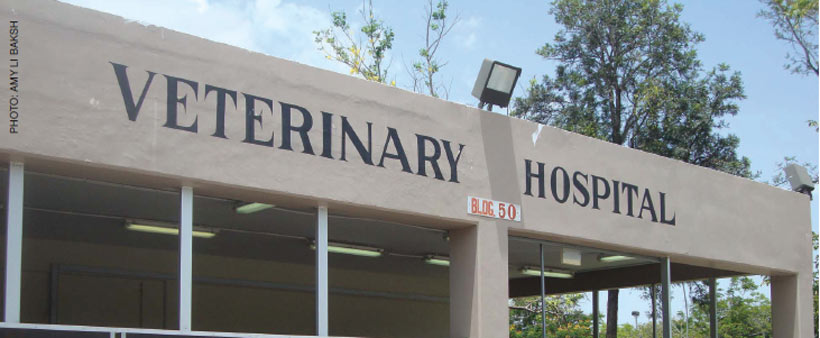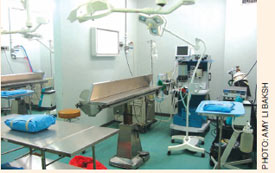 |
 |
 |
|
April 2011
|
Saved by the Vet
|
If you saw pet-less people lining up to see a vet, it would seem kind of absurd, wouldn’t it? I mean, the pet, the vet, they go together; but no matter how much an animal we might think some people, we don’t really expect them to go to the vet for health care. The truth is, although veterinarians do not deal directly with humans, they play a major role in protecting them from zoonotic diseases – the kind that can be transmitted from animals to humans, like Bird Flu, Mad Cow Disease, Leptospirosis and Rabies. By extension, they also have a significant role to play in the area of food safety. Most people don’t make that connection; in fact, when you mention a vet, it is almost automatic to think: dog doctor. It’s one of several myths The UWI School of Veterinary Medicine (SVM) is trying to eradicate with a campaign to educate the public not only on what vets do, and to whom, but also about the comprehensive range of services offered at the Veterinary Teaching Hospital at the Eric Williams Medical Sciences Complex in Mt Hope. Dr. Omar Khan, who is Manager of the SVM’s Hospital Services and Business Development, is heading the thrust to raise this awareness. This year, the World Veterinary Association marks 250 years since the creation of the veterinary profession, so it is a rather landmark one, and worldwide, veterinary clinics and practitioners are marking it in different ways. World Vet Day, usually celebrated on the last Saturday in April, will be marked on April 30, and its theme is Rabies. It may seem like a remote and outdated disease – and it might be locally – Dr Khan says, “We do not really see rabies in small animals much. I have not seen a case here since I started in July 2010. It is more common in cows and small ruminants.” But even as you read this article, someone just died from rabies. Believe it, because in the next ten minutes the disease will take another life. According to the World Veterinary Association “one person dies from rabies every ten minutes. Each year, rabies claims nearly 55,000 victims throughout the world and most of them are children.” Although it is nowhere as prevalent locally as it is in Asia and Africa, the SVM still takes preventative measures when dealing with its animals. One of these measures is the compulsory vaccination of all SVM staff and caregivers in order to eliminate the transmission of any zoonotic disease. As the only regionally accredited veterinary school in the Caribbean, it is not only dedicated to providing optimal education for veterinary professionals, but is also determined to provide the best in health care for its animal patients. The SVM’s Large Veterinary Hospital, combined with the small-animal, farm-animal and equine clinics, can handle just about anything. During our visit, I saw what seemed to be a miracle when a really small dog, obviously one of those toy dogs, was brought in after he had been run over by a car. His both hind legs had been broken and he had been stitched all along his little torso. He was in the recovery room, perky and in seemingly good spirits along with a rather obese three-legged cat, and other recovering residents. Meanwhile, a guinea pig was being prepped for surgery with anesthesia. Dr Khan outlined some of the services. Apart from being able to treat victims of car accidents and other mishaps, many of whom are brought in with broken bones and the like, the SVM offers cataract surgery, dentistry, digital radiography and a host of other health care services (see Services and Equipment at the SVM-VTH). In addition to their emergency services, they also offer appointments and are now opening on Mondays and Wednesdays until 7pm, on Tuesdays, Thursdays and Fridays until 3pm, and Saturdays until 1pm. From Monday to Friday, they begin at 8am and on Saturdays at 9am. |
Services and Equipment at the School of Veterinary Medicine-Veterinary Teaching Hospital Services
Equipment
|


